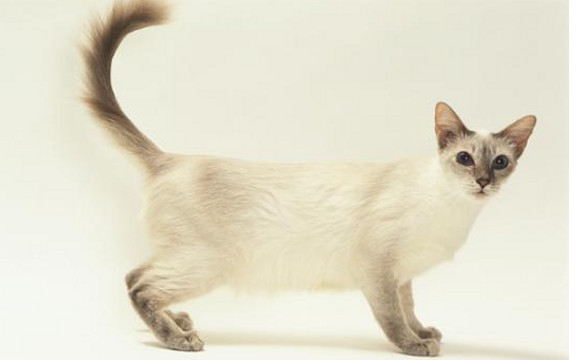The Javanese cat breed, admired for its beauty and intelligence, has an interesting history and unique characteristics. This comprehensive guide delves into their origins, personality, care requirements, and health concerns, providing a thorough understanding for potential cat owners and enthusiasts.
History and Origins
The Javanese cat, part of the Siamese family tree, shares its lineage with breeds like the Balinese, Colorpoint Shorthair, and Oriental Shorthair. Developed by breeders aiming to enhance the Siamese’s traits, the Javanese boasts a long, silky coat and a variety of colors.
Initially, the breed was created by crossing Balinese cats with Colorpoint Shorthairs, resulting in a longhaired cat with the Siamese’s characteristic elegance but in different colors. Recognized by the Cat Fanciers’ Association (CFA) in 1987, the Javanese name was chosen for its exotic appeal, though it doesn’t hail from Java.
Appearance and Characteristics
Javanese cats have a sleek, muscular build similar to the Siamese but appear softer due to their semi-long fur. They lack an undercoat, making their fur less prone to matting and tangling. Common colors include red, cream, tortie, and lynx points.
- Size: Medium
- Weight: 5-10 pounds
- Coat: Semi-long, silky, no undercoat
- Colors: Red, cream, tortie, lynx points
Personality and Temperament
Javanese cats are known for their playful and affectionate nature. They are highly intelligent, curious, and possess excellent communication skills. These cats thrive on interaction and are known to follow their owners around, engaging in “conversations.”
- Activity Level: High
- Playfulness: Very playful
- Need for Attention: High
- Affectionate: Very affectionate
- Vocal: Quite vocal, similar to Siamese
Care and Grooming
Despite their long hair, Javanese cats require minimal grooming due to their lack of an undercoat. Weekly brushing is usually sufficient to keep their coat in good condition. Regular dental care, nail trimming, and ear cleaning are also essential parts of their grooming routine.
- Grooming Needs: Low to moderate
- Dental Care: Regular brushing
- Nail Trimming: Every few weeks
- Ear Cleaning: As needed
Health and Lifespan
Javanese cats are generally healthy but can be prone to certain genetic conditions common in Siamese-related breeds. Regular veterinary check-ups are vital to maintaining their health.
- Common Health Issues:
- Protrusion of the cranial sternum
- Endocardial fibroelastosis
- Dental issues
- Lifespan: 10-15 years
Living with a Javanese Cat
Owning a Javanese cat means welcoming a lively, loving, and interactive pet into your home. They bond closely with their human companions and enjoy being involved in all household activities. Their intelligence makes them easy to train, and they often enjoy puzzle toys and games that challenge their minds.
- Good with Children: Yes, they are generally good with children due to their playful nature.
- Good with Other Pets: Yes, they typically get along well with other pets.
Training and Socialization
Javanese cats are highly trainable due to their intelligence and eagerness to please. They can learn tricks, use a scratching post, and even walk on a leash if trained properly. Socializing them from a young age helps them become well-adjusted adults.
- Training Needs: High, they enjoy mental stimulation
- Socialization: Important for well-rounded behavior
Diet and Nutrition
A balanced diet is crucial for maintaining the health and vitality of a Javanese cat. High-quality cat food that meets their nutritional needs, including protein, vitamins, and minerals, is recommended. Portion control is essential to prevent obesity, especially given their high activity levels and love for food.
- Diet: High-quality commercial cat food
- Portion Control: Important to prevent obesity
- Hydration: Ensure fresh water is always available
Conclusion
The Javanese cat breed offers a delightful combination of beauty, intelligence, and affection. Their minimal grooming needs and vibrant personalities make them an excellent choice for cat lovers looking for an engaging and loyal companion. Proper care, regular health check-ups, and a loving environment will ensure your Javanese cat thrives and brings joy to your home for many years.
For more detailed information on caring for a Javanese cat, visit the original article here.
By enhancing the content with targeted keywords and maintaining an engaging tone, this rewrite aims to improve SEO performance while providing comprehensive and valuable information to readers.

